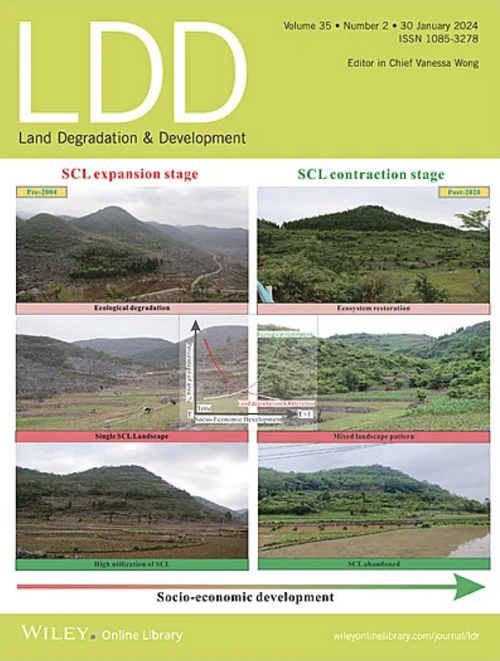Impacts of Grassland Use Types on Soil Ciliate Communities in the Northeastern Qinghai-Tibetan Plateau
IF 3.6
2区 农林科学
Q2 ENVIRONMENTAL SCIENCES
引用次数: 0
Abstract
Soil ciliates, crucial components of grassland ecosystems, serve as sensitive bioindicators of soil health and disturbance. This study investigates ciliate communities across four grassland use types in the northeastern Qinghai-Tibetan Plateau (QTP): seasonal and continuous grazing in natural grasslands (SGG and CGG, respectively), artificial perennial Elymus nutans Griseb. grasslands (PEG) for seasonal grazing, and artificial annual Avena sativa L. grasslands (AAG) for forage. Using live observation techniques, we identified 114 ciliate species from 10 classes and 21 orders, with Haptorida and Sporadotrichia emerging as dominant groups. Our findings revealed that the grazed grasslands harbored greater endemic ciliate species richness compared with AAG. SGG and CGG exhibited significantly higher ciliate diversity than other types, while PEG and SGG supported higher ciliate abundances. Low Jaccard similarity indices between grassland use types indicated distinct ciliate communities, reflecting management-induced environmental heterogeneity. Redundancy analysis identified above-ground biomass and soil pH as primary drivers of ciliate community structure. Notably, SGG promoted the highest ciliate diversity, suggesting its potential as a sustainable management practice for maintaining soil health in the QTP. This research provides crucial insights into the relationship between grassland management and soil ciliate diversity in high-altitude grasslands. Our findings support the implementation of moderate grazing practices to enhance soil quality and ecosystem resilience in the QTP, with implications for sustainable management of similar ecosystems worldwide.求助全文
约1分钟内获得全文
求助全文
来源期刊

Land Degradation & Development
农林科学-环境科学
CiteScore
7.70
自引率
8.50%
发文量
379
审稿时长
5.5 months
期刊介绍:
Land Degradation & Development is an international journal which seeks to promote rational study of the recognition, monitoring, control and rehabilitation of degradation in terrestrial environments. The journal focuses on:
- what land degradation is;
- what causes land degradation;
- the impacts of land degradation
- the scale of land degradation;
- the history, current status or future trends of land degradation;
- avoidance, mitigation and control of land degradation;
- remedial actions to rehabilitate or restore degraded land;
- sustainable land management.
 求助内容:
求助内容: 应助结果提醒方式:
应助结果提醒方式:


